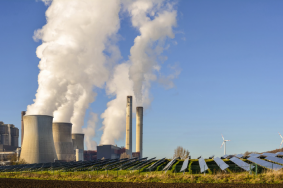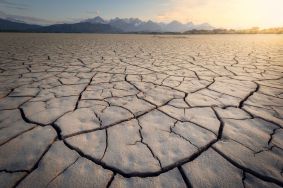Goal 1: Achieve the climate goals
Global warming is mainly due to an increase in man-made greenhouse gas emissions. The consequences can already be observed worldwide. In Germany, too, we are feeling the effects of climate change: the incidence of heavy rainfall, drought and heat records is increasing, and sea levels are rising.

Germany aims to be largely greenhouse gas neutral by 2050. To achieve this, greenhouse gas emissions must be reduced by at least 55 per cent by 2030 compared with 1990 levels in accordance with the Federal Climate Action Act. This requires …

Extreme weather events such as heat waves and droughts, heavy rainfall, floods and storms cause billions of euros in damage, some of which is life-threatening. Knowledge is therefore needed about how climate change affects the frequency and intensity …

To achieve an effective international climate policy, political decision-makers need reliable forecasts of global climate developments, including in the marine and polar regions.
At the Paris Climate Change Conference in December 2015 (COP21), 195 countries reached a consensus for the first time on a general global climate protection agreement. Almost all countries in the world have thus committed themselves under international law to defining national climate protection targets for implementing the agreement. The aim is to limit global warming to well below 2 degrees and if possible, even to 1.5 degrees. To achieve this, emissions must be reduced to net zero by the middle of the century. The signatory states also want to improve the global capacity for resilience and adaptation. The decisions are closely related to the United Nation’s Sustainable Development Goal ‘Take urgent action to combat climate change and its impacts’ (SDG 13). The current voluntary commitments are far from sufficient to achieve the agreed target. The European Commission has therefore announced, as a contribution the European Green Deal, that it would make Europe the first climate-neutral continent by 2050. Germany has launched the Climate Action Plan 2050 to make its contribution to the Paris Agreement. Through the Climate Action Programme 2030 and the Climate Action Act, the Federal Government has adopted the first concrete steps towards implementation. Research and innovation are key components of this programme. They are a prerequisite for achieving the ambitious climate action goals of the Federal Government and the European Union, for initiating additional dynamics and for tapping into new climate protection potential.
Research and innovation will focus on key sectors to make substantial progress in reducing greenhouse gas emissions and in risk prevention and adaptation to climate change. New climate models and greenhouse gas monitoring systems provide the necessary data and information as a basis for an effective and credible climate policy.
Last updated on






